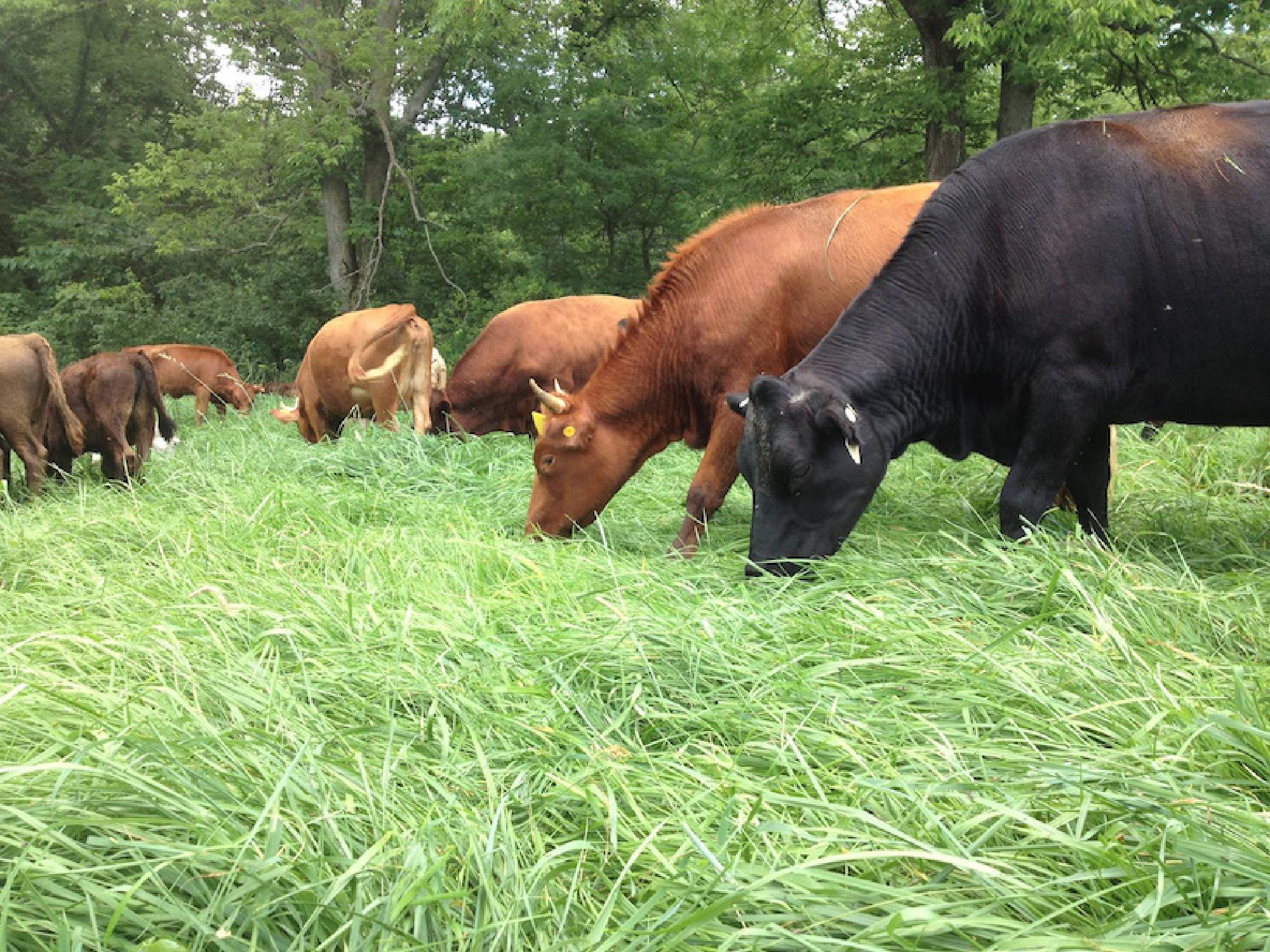
Holism, Essentialism and BioMimicry
Our methods and approach are different. They are rare. They are unconventional, and, contrary to common belief, they are not a throwback to old-style farming. Our practices are grounded in three anchors, or cornerstones. Holism says that all parts of a whole system are intimately interconnected and it views the whole as being greater than the sum of all of its parts. Essentialism is the principle that each thing is imbued with its own unique nature and that the expression of that nature is the highest form of existence while departure from that nature leads to degredation. Biomimicry, is using processes and methods that copy nature. As you flip through this brief slide show, look for the application of these concepts!

High Intensity (Density)
In nature, many animals use herds, flocks, schools and packs for protection, comfort and survival. Grasslands are adapted to receive intense hoof and grazing pressure from large, dense herds that move rapidly through, eating and trampling everything in sight while leaving massive amounts of manure and urine to fertilize the soil, provide food for microbes, earthworms, insects and scavengers and to reinvigorate the growth cycle.
We mimic this principle of high density (or intensity) by using "mob stocking" and "high density grazing" techniques. Herds and flocks use only a small percentage of the farm on any given day. Cattle, sheep and goats can be found in groups with a stock density of tens of thousands to hundreds of thousands of pounds per acre per day. This intense "ecological excercise" is critical to improving the soil and obtaining high nutrient density in our forages and our meat and eggs.
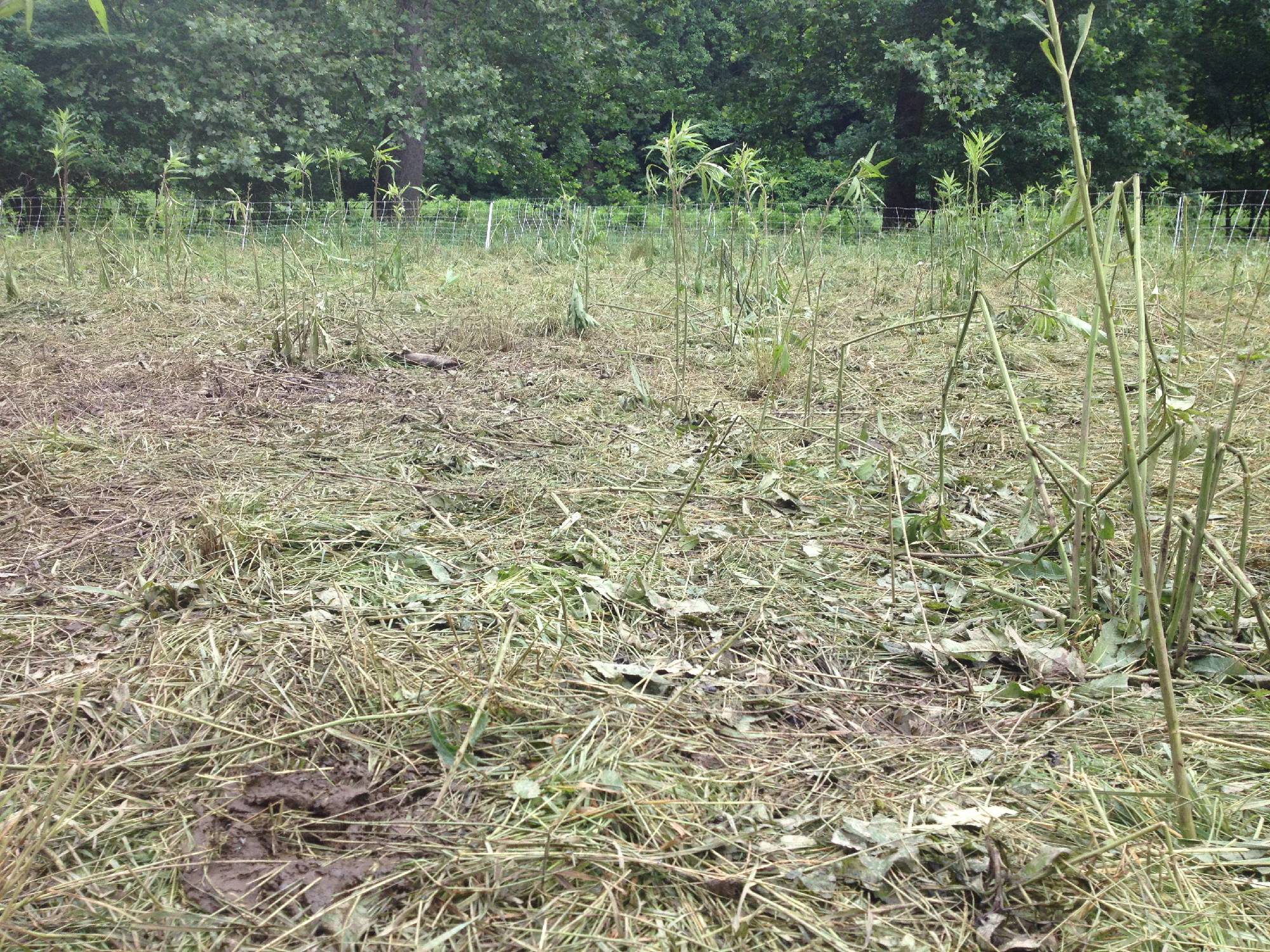
Short Duration
In nature, everything moves. Animals that stay in one place in the wild are typically sick and make ready targets for predators of all sorts (predators for our livestock can be everything from pathogenic microbes to parasites to raccoons to coyotes.) Continous movement of herds and flocks allows animals to move away from manure and parasites and toward fresh food.
Most of the livestock on our farm are moved to fresh pasture daily. These species include cattle, sheep, goats and meat chickens. Laying hens, turkeys and pigs, which are generally found in less dense groups, are moved to new ground every 7-12 days. Intense grazing pressure combined with short duration is essential for building soil, spurring strong vegetative growth and avoiding disease.
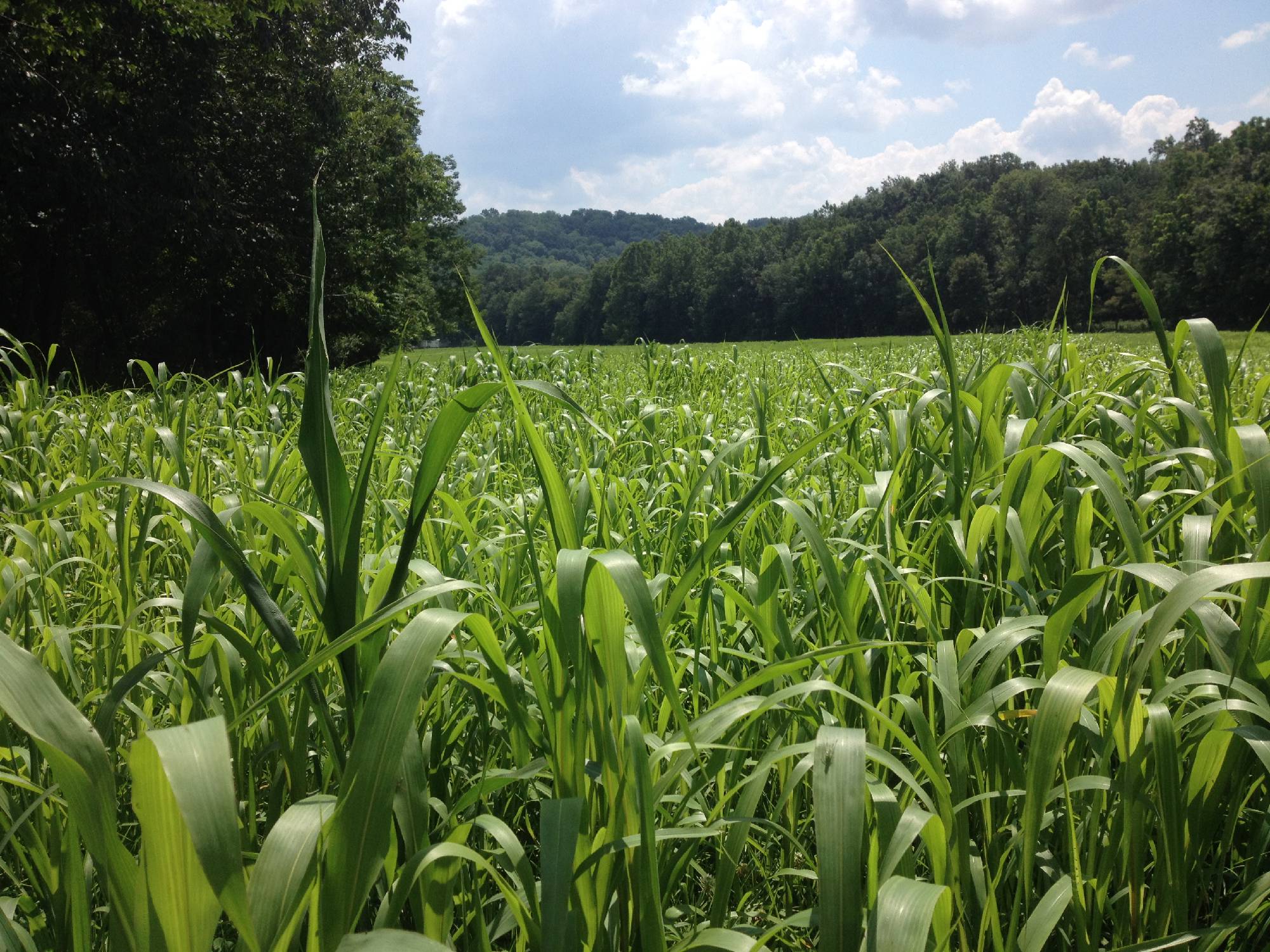
Ample Rest
An intense ecological workout just wouldn't be effective without ample periods of rest. While only a tiny fraction of the farm is being occupied by a given species on a given day, the vast majority of the farm is resting from use by that species. This rest is what allows forage plants to put down deep roots in the soil to feed microbes and to bring up nutrients for the next grazing cycle.

Birds Follow Herds
In nature, large flocks of scavenging birds follow the wake of apparent destruction left by trampling herds. These birds find abundant flies, larva and insects among the dung and trampled plant litter left behind.
After grazing our pastures with cattle, sheep and goats, we bring in the meat chickens, laying hens and turkeys to clean up. These birds will scratch through manure pats and work the manure into the soil while eating nutritious fly and insect larva. In turn, the birds leave their own manure. Enough fertilizer is left behind to spur rapid and sustained growth of the next forage crop.
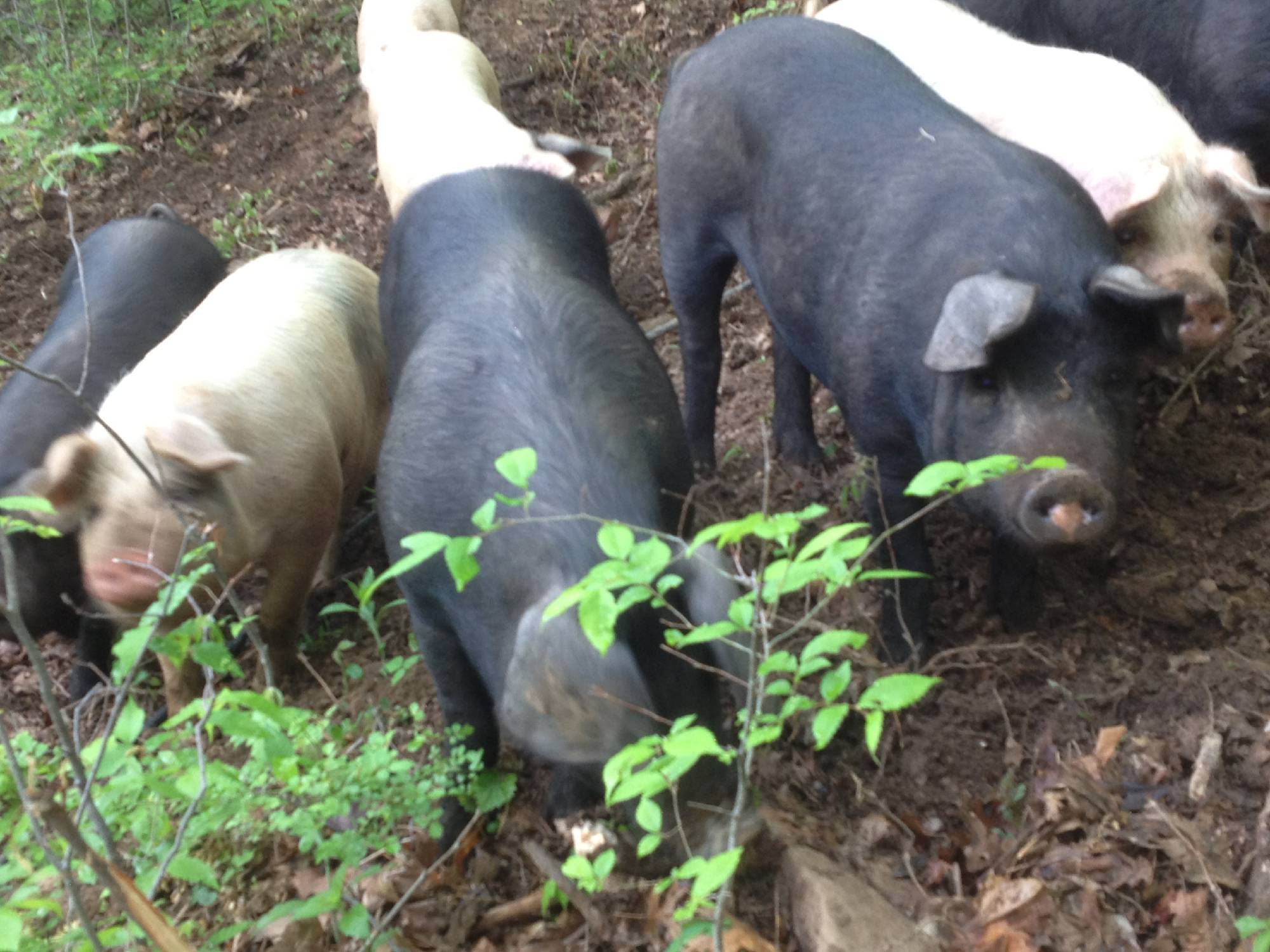
Pigs in the Woods
Believe it or not, pigs are nature's sanitation engineers! Pigs are omnivorous, meaning they will eat all types of things, including plant leaves, grains, insects, roots, nuts, and even carion. Pigs root up the surface of the soil, turning under the rotting carbonaceous materials where they can be consumed gradually by soil microbes. Pigs get a bad wrap because they are very destructive and counterproductive when kept in confined quarters (including woodlots without being moved.) But when allowed to move frequently, pigs do a beautiful job of "fluffing" up the soil and regenerating the forest floor. Pigs make hardwood stands healthier by removing pests and limiting competition from invasive and scrubby plants.
As soon as our piglets are large enough, we move them to the wooded areas of the farm where they spend their days in pig paradise! Like the chickens, they are supplemented with a ration of non-GMO roasted grains.
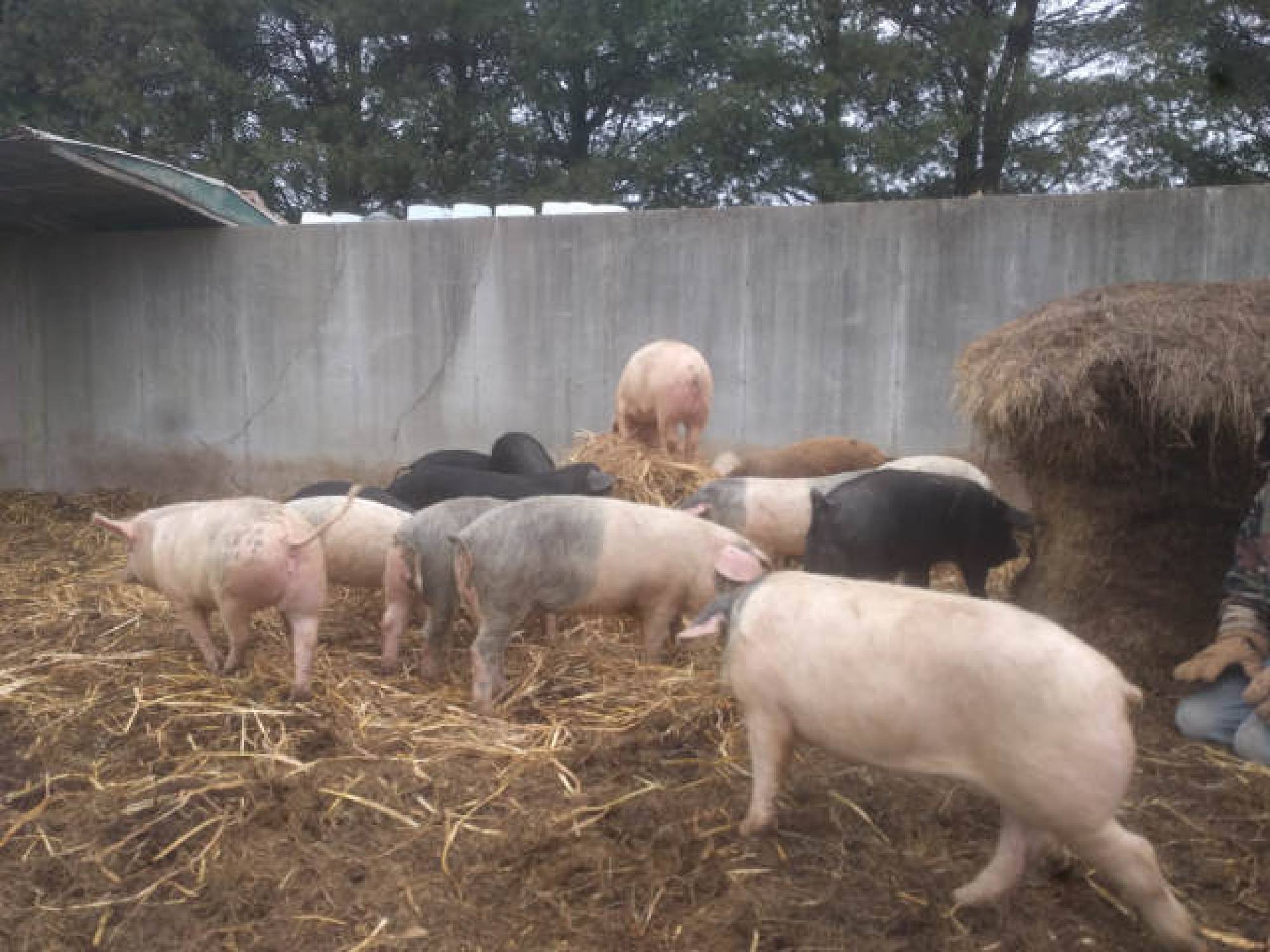
Pigs in the Compost
Our breeding pigs are kept in areas that simulate richness of a forest floor. They live and sleep on a layer of deep bedding made up of wood chips, straw and hay. As the pigs root through the composting bedding, turning it with their powerful snouts, they scavenge for produce scraps and fermenting vegetation. In the winter, any pigs that have not grown to full size come back to the composting area to help turn wood chips and scraps into rich garden soil.
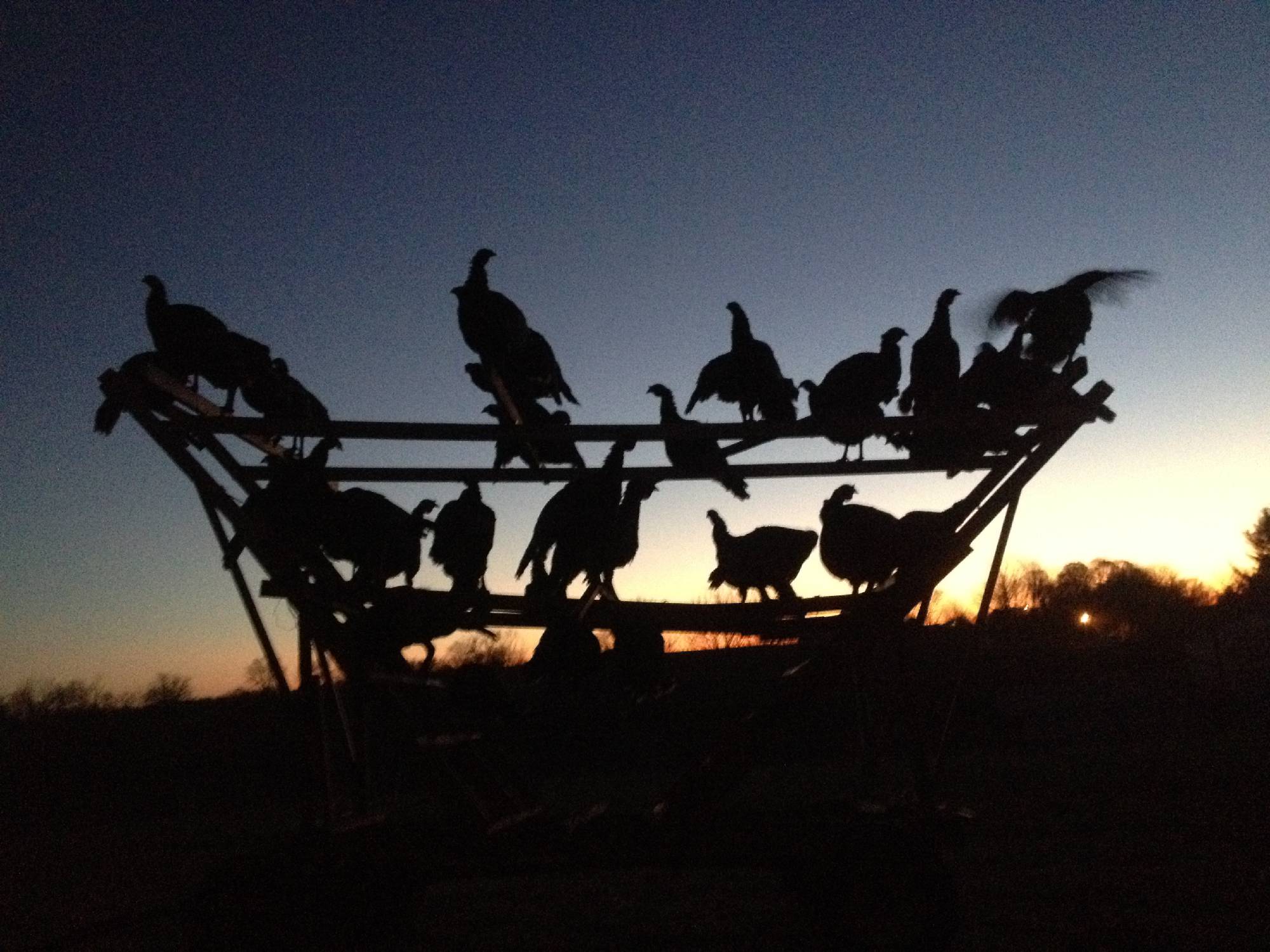
Species Appropriate Diets
In nature, herbivores such as cattle, sheep and goats do not eat grain. They consume mostly leafy or woody forage with some seed heads. A steady diet of grain in the herbivore's diet is known to cause acidosis, a condition which leads to diarrhea and early death. Grain is used extensively in the cattle feedlots of Kansas and Colorado from where the vast majority of America's beef comes and necessitates a steady diet of antibiotics to maintain growth and health of the animals. As in nature, our herbivores eat pasture only and are not given vaccines, antibiotics or pharmaceuticals of any kind.
Omnivores, such as pigs, chickens and turkeys consume a wide variety of feed including forage, insects and grains. The natural diet of our omnivores is supplemented with a ration of non-GMO grains and minerals from a farmer we know. Omnivores are also pharma-free.
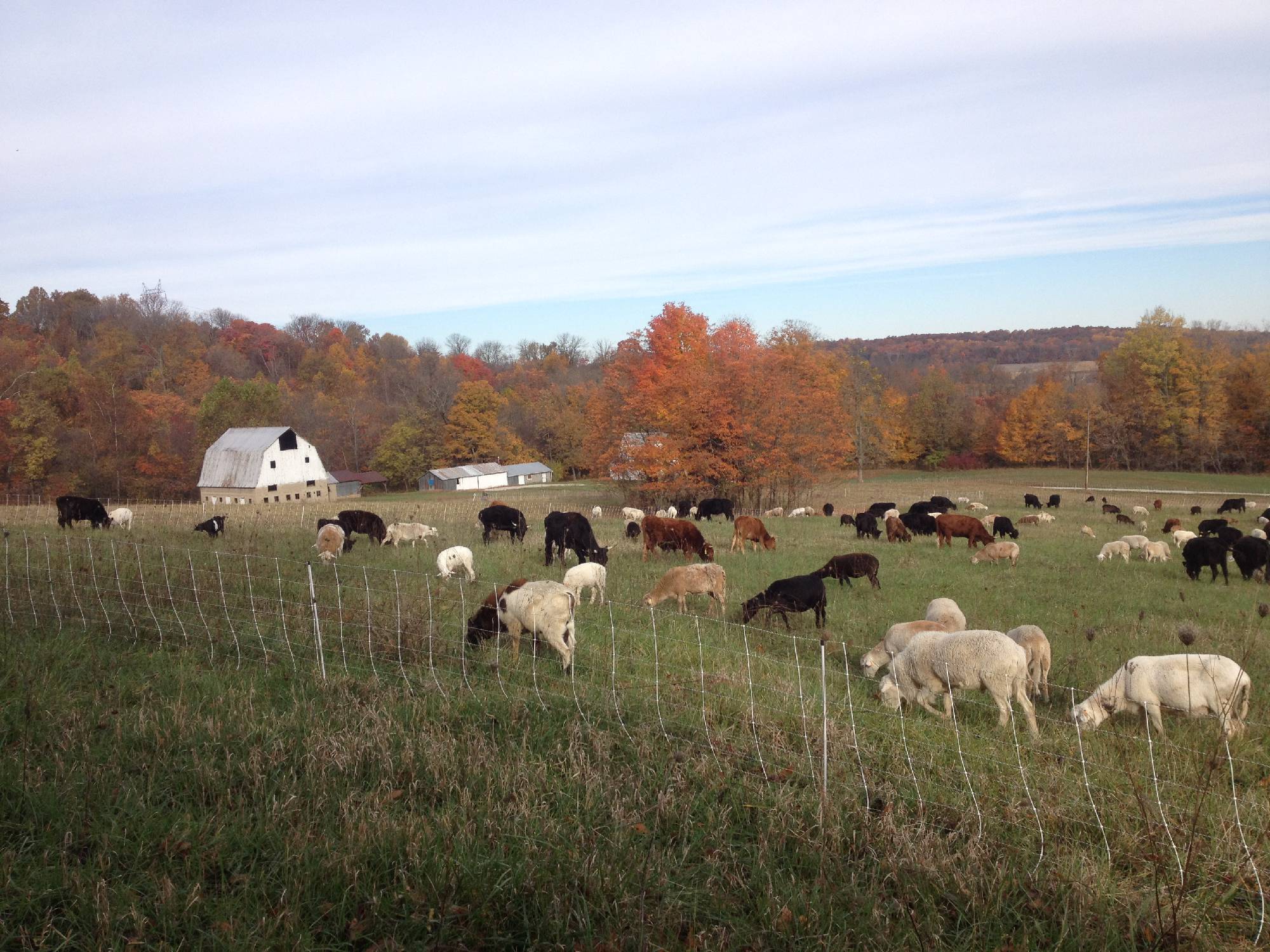
Multi-Species Herds
In nature, various species remain in their species-specific herds and flocks ("Birds of a feather flock together.") Yet we also see these herds and flocks comingle, especially as herd densities increase. It turns out that various species are "dead-end hosts" for the parasites of other species. This means that when a particular species picks up parasites peculiar to another species, those parasites can no longer reproduce. This phenomenon results in an overall reduction of parasite load on all species.
We run all of our cattle, sheep and goats in multi-species herds to reduce overall parasite load on the animals. Cattle are dead-end hosts for sheep / goats and vice versa. Following herbivorous herds with chickens and sometimes pigs, also "sanitizes" pastures and reduces overall parasite exposure of the various species.
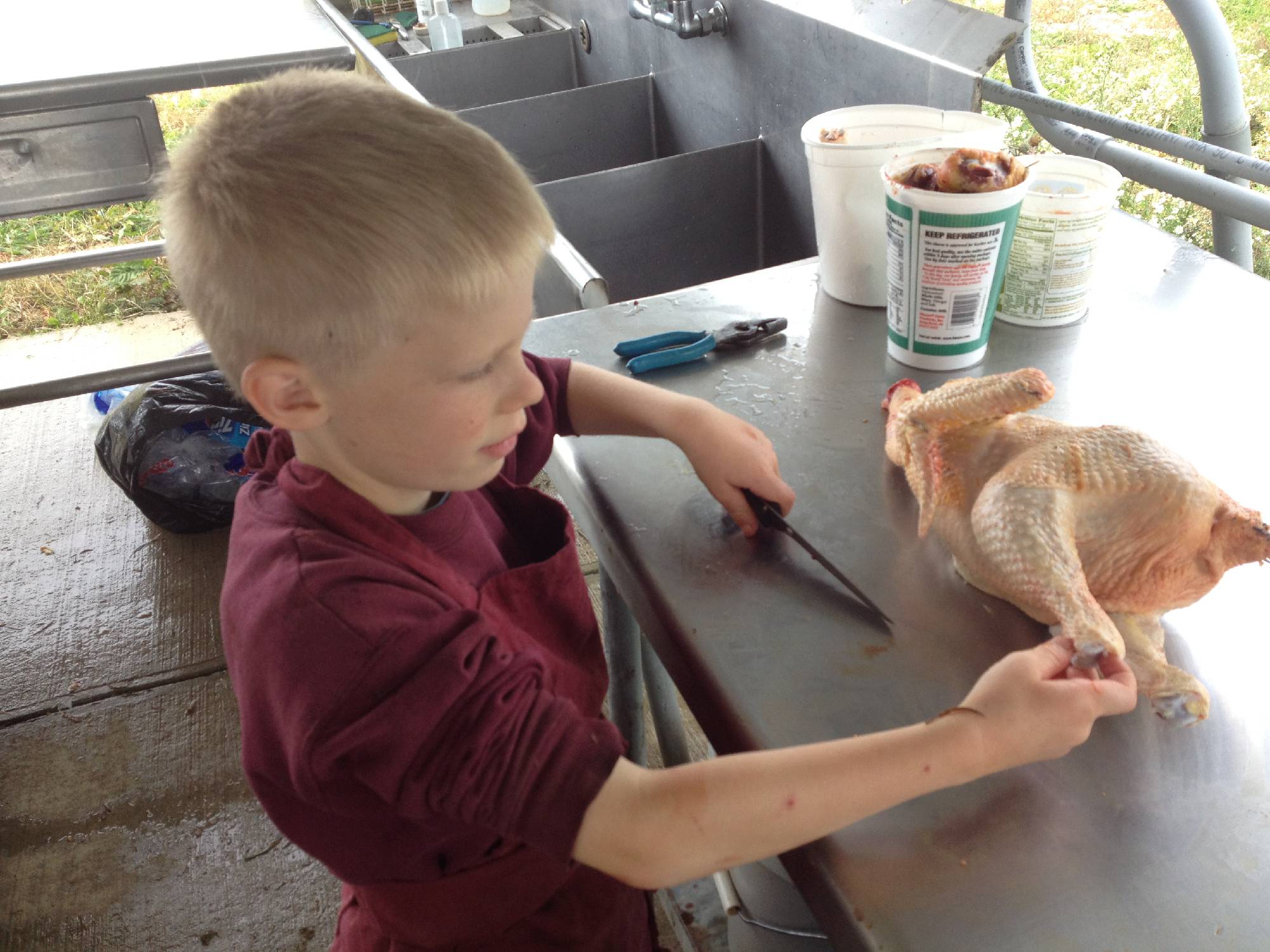
Slaughter and Butcher
Animals undergo the least amount of stress when butchered as close to the farm and with as little transportation as possible. As owners of the livestock we consume, we have the widest range of options for humane slaughter and butchering, from on-farm processing, to custom slaughter to state inspected processing.
We butcher our own poultry on the farm. We do not use high concentration chlorine baths, electrical shock or saline injections as is typically the case in USDA-inspected plants.
Partners are free to observe and participate in any slaughter or butchering activity conducted on their livestock. We believe the best inspection is that performed by the people who intend to eat the food.